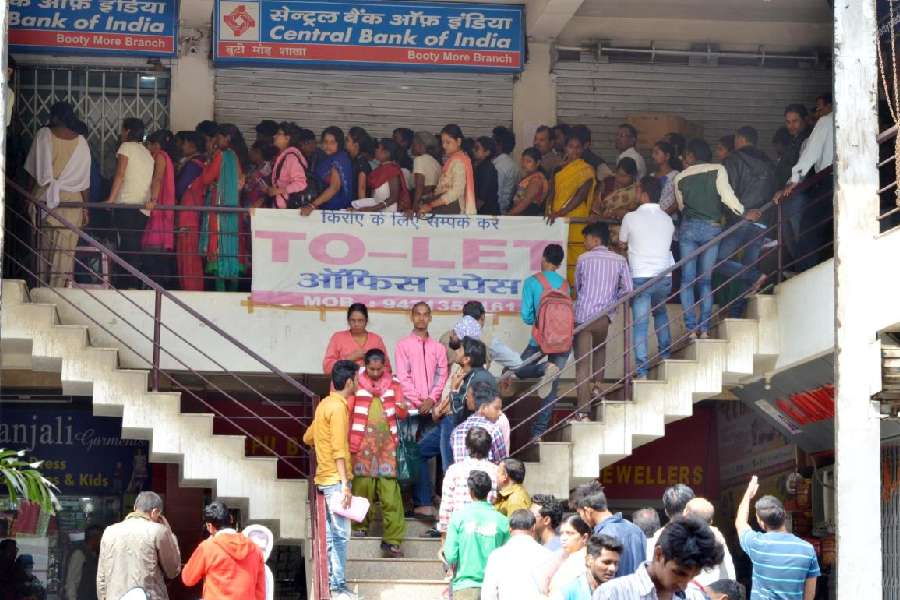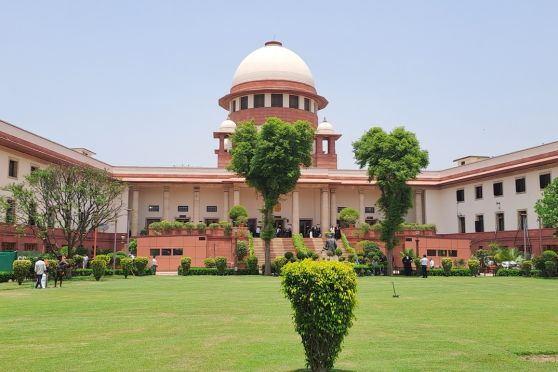|
|
When I left for my foreign travels in July, I flew out from New Delhi’s old international terminal on the last day it was operational. A soul-less transit-warehouse, it had little to incite any affection or nostalgia; indeed, little going for it at all except it was the hub for a city I love and one in which I lived for a decade. There were familiar things one’s mind touched when departing: the ghastly, dashed off, Husain mural that stretched over the check-in fishmarket, the restaurant run by the ITDC/Ashoka people where the weary waiters were not always unkind as you sipped your watery coffee and pulled at your cigarette at some ungodly hour of the morning, the free PCO booths where allsorts lined up to make mostly unneccesary farewell phone calls, and so on. The arrivals hall also had the familiarity and fit of an old glove, where, upon emerging from immigration/customs, you were greeted by a wall of sweating liveried drivers of hotel courtesy cars, all waving placards with strange foreign names; when waiting to receive someone, you could while away the time remembering other such moments of waving, greeting, hugging and the grabbing of the luggage trolleys, the same familiar stage being populated by the cast of your life — friends, partners, children growing taller each time as if in an animation film. Other than these familiarities and memories, the old IGI was a typically ugly, modern Indian, kaam-chalaau dump where you avoided spending one more minute than necessary.
On the other hand, watching the new Terminal 3 come up over the last few years, people experienced an aura imaginably not dissimilar to that surrounding the pyramids or the great temples when they were being built: a huge whale of a building rising majestically through whirlwinds of dust, the slow-motion choreography of the machines and the labourers, the workers’ yellow hard-hats and fluorescent orange jackets making a bizarre combination with their torn and dirty clothes. We were waiting for this building, all of us, with an expectation that was even larger than the scale of the project itself. This T-3 would be the grand imarat that would greet millions of foreigners and yes, us natives too, when we landed or took off from North India; this massive immobile would, literally, transport us Indians into the 21st century and to the very edge of the developed world; finally, the shame of cheap, makeshift institutional architecture that blighted the 1970s and 80s would be buried under the gleaming new Gateway of India.
As my plane taxied for take-off, we rolled past the new air-gates on which the hard-hats were putting the finishing touches. The big plate-glass windows lining the passageways to the gates still had white crosses painted on them to warn people from walking into the glass. Tomorrow, Manmohan Singh would inaugurate the terminal and the first flights would begin to dock, the lucky first passengers would disembark into the gleaming newness that we hoped was at least this corner of Ruposhi Bharat. The Optimistic Ostrich part of me and the part that is fascinated by aircraft and airports wanted very badly to believe in the hype, especially as it seemed backed by the very visible presence of such relentless industry. The cynic in me kept muttering “T-5, T-5, T-5,” remembering the disastrously chaotic launch of Heathrow’s latest terminal a few years ago.
As it happened, T-3 opened and began operations without the multiple misfortunes that upended themselves on LHR’s Terminal 5. Properly spectacular disasters were waiting to happen in Delhi but they would crack themselves down upon the CWG structures and not the airport. When I landed back from London a week ago, it was clear that the nature of the disaster enveloping T-3 was altogether much quieter and far more long-term than the odd collapsed walkway or unfinished Games Village loos.
Abroad since it opened, I’d already been getting adverse reports from people who were using the new terminal. “The faeces-coloured pile carpet from the gate is so thick that pulling your strolley is twice the work it should be.” “Yaar, the four-storey parking lot is just floors stacked on pillars. There are no walls. If you reverse too enthusiastically without looking, your car will drop off on to a taxiing aircraft.” Upon landing and reaching the passport control kiosks, I found another detail to add to the carping about carpets and car-parks. In most other international airports, the home passengers are given priority as to where the immigration-check queues are located; here, we’ve done another, typical, Indian kow-towing to the over-revered foreign atithi — a normal, non-PIO/OCI Indian citizen has to walk the extra length of about two cricket pitches, passing far more conveniently placed booths for ‘Foreign Passports’, before he can line up to be processed. Whether it was the scheduling of my flight or just good organization I don’t know, the actual passport check was very quick but it was long enough for me to notice there were special, exclusive counters for business class passengers. At this, the last trace of any sunny, ‘give-them-a-chance’ attitude I might have held, disappeared. It’s one thing for airlines to give preferential treatment to customers who are paying more but quite another for the immigration department, an official arm of our great democracy, to do the same.
Suddenly, everything about the sparkling new terminal began to irritate me. As soon as you pass through the passport checks you are confronted with a huge duty-free shop. I did need to buy my quota of bottles so I was initially happy. But waiting for my baggage, several nasty negative questions began to raise their prickly heads. Other new international airports have spaces occupied by art exhibitions and art installations, indoor gardens and flowing water, even libraries, but Delhi seems to have gone the way of most other air hubs, where the only activity encouraged while waiting for your flight or luggage is that of spending your money. The only art you can see in the arrivals area is a long ‘mural’ in oils by Paresh Maity that matches the Husain excrescence in the old terminal for utter, tasteless, banal daubery. With all the consultants and designers and planners deployed, was this the best Delhi Airport could do?
Walking out through customs into the re-constituted wall of drivers and greeters, it suddenly came home to me that this airport, despite all its grandiose pretensions was just a newer, larger version of the faceless, soulless terminal I’d left in July. The portraits of ethnic Indians (mustachioed cowherds for the men’s toilets, ghagra-cholied village belles for the women’s loos) and the odd terracotta sculpture did not make this airport ‘Indian’. The orchids in planters that dot the lounges do not make this airport anything but a wannabe Bangkok, the shiny new VW from a Gurgaon dealership that sat amidst the Chivas bottles as a lottery prize did not make this place anything but a wannabe Dubai (except in Dubai they have Ferraris as prizes), the long (still clean) walls and floors could belong to any half-way new airport in any small town in the West. In fact, the only thing Indian about Terminal 3 was when I looked through a gap in a wall and saw a yellow-hatted construction mazdoor, complete with brown rags, still fixing some air-conditioning duct.











